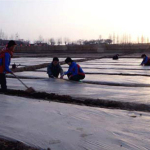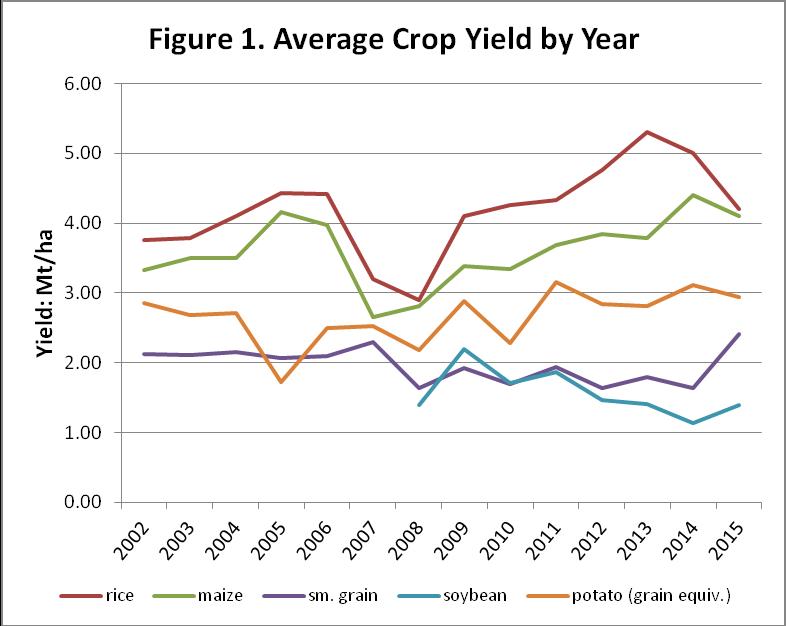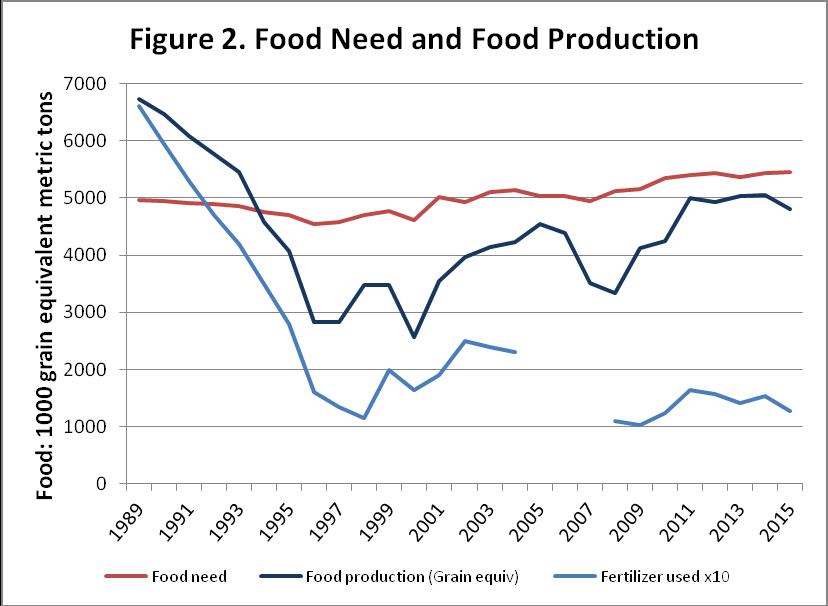Why Headlines About DPRK Agricultural Production Miss the Point

Last week, the Food and Agriculture Organization of the United Nations (FAO) released an updated estimate of DPRK agricultural production for the 2015-2016 farming year,[1] indicating a modest decline in food production compared with recent years that was largely attributed to the early season drought in 2015. As a result, food resources were once again not adequate to meet minimum nutritional requirements in North Korea. However, a closer examination of the data reveals evidence of substantial resilience in the farm sector not previously seen.
The prolonged drought in early 2015 was significant, but not catastrophic. Rainfall amounts were well below average in most parts of the country through June, but recovered in July and August. Comparing the rainfall and vegetation maps in the recent FAO report with a similar report for the 2014-2015 farm year[2] shows that in early 2014, rainfall was actually lower than in 2015, though by May it had picked up. Similarly, vegetation cover in July/August of 2014 was less than in 2015.
The difficulty for 2015 was that the early drought extended well into the planting months of May and June, making it hard to get crops established in time. Rice was especially affected by the early drought, as substantial amounts of water are required to flood and prepare the fields for transplanting. A June 2015 FAO update reported around 32,000 hectares (ha) of paddy had not been transplanted.[3] That proved to be an underestimate, as overall rice area fell by twice that amount—by 22 percent compared to 2014—and production fell by around 25 percent. However, farmers adapted by increasing the area planted to corn (by 5 percent) and especially to soybean (by 11 percent), crops which require much less water both to plant and to grow through the season. Yields were also affected, but not by as much as might be expected given the poor weather: rice averaged 4.2 MT/ha compared with 5.0 MT/ha in 2014, and maize fell from 4.4 to 4.1 MT/ha. Figure 1 shows the yields of various crops by year.

The FAO reports an overall 10.8 percent decline in production, but when rice is converted to grain equivalent (based on a 66 percent milling recovery rate)[4] and the 2015 spring production estimate (primarily wheat and early potato) is revised down by 36,000 MT to the actual drought-affected harvest, the overall decline is closer to five percent year on year. Figure 2 illustrates the food production trajectory since 1990.

Still, when one is living on the margin, even a five percent decline in production is significant, and the national food shortfall doubled between 2014 and 2015 to around 600,000 MT grain equivalent. Other factors contributing to reduced production are a 17 percent decline in available fertilizer (including a drop in phosphate fertilizer by over half compared with recent years), and chronic lack of fuel and equipment for timely field preparation in the spring.
Nonetheless, considering how the year began, this was a good performance by an under-resourced farm sector. Farmers adapted to the weather conditions in intelligent ways, and clearly worked hard to produce a reasonable crop, well in line with recent production performance. The substantial increase in area planted to soybean and the recovery of yields to around 1.4 MT/ha, more in line with the 2009-2013 period, is noteworthy and hopefully a sign that greater attention will be paid to this important crop in the future.
One glaring issue remains—the high level of post-harvest crop loss. The 2014 FAO update reported results of a collaborative study which estimated post-harvest losses in the DPRK at between 15 and 17 percent for cereal crops, validating the estimates that had long been used in the annual FAO/World Food Programme Crop and Food Security Assessment Reports. These losses are a consequence of a lack of fuel and proper harvesting and grain handling equipment leading to crops being left in the field for long periods after harvest and spoiling because they are not properly dried, as well as losses from other causes. Access to simple and inexpensive harvest and processing machinery would go a long way to solving this problem. A recent UNDP project to reduce post-harvest loss achieved a 50 percent reduction in losses.[5] If similar results could be extended nationwide, the savings would amount to over 300,000 MT of grain, equal to half this year’s food deficit. One must question why government policies and priorities have not addressed the technically simple and economically modest investments that would raise food availability by five to ten percent overnight.
Despite last year’s production decline, we can expect stable, if not improved, performance this year. Rains in March and April have been mostly above average in the farming areas of the country, and the above average rainfall in the latter half of 2015 has largely, though not entirely, refilled the irrigation reservoirs. Thus, even if there is a short-term decline in precipitation this year, there is probably enough stored water to accomplish most of the rice planting, which was not the case in 2015.
There is continuing debate regarding the extent and consequences of policy changes in agriculture which have given more autonomy to small, family-sized production units, but at present the results are at the very least not negative, and may have facilitated the adaptive response at the farm level to adverse weather conditions last year. The agriculture sector in the DPRK is still not dynamic, but it appears at least able to respond to short-term challenges. Farmers have evidently learned to manage production with limited resources, and are no longer dependent on the inordinately high use of fertilizer and chemicals that characterized the pre-crisis period. Additionally, the small sub work teams may be both more nimble and more motivated to adopt cropping methods suited to annual conditions. Should the role of the market in the DPRK continue to expand, and if farmers are able to purchase supplies and production-enhancing equipment with their profits, the next goal will be to move from robust stagnation to sustainable growth.
_________________
[1] Food and Agriculture Organization of the United Nations, Global Information and Early Warning System, “GIEWS Update: The Democratic People’s Republic of Korea Outlook for Food Supply and Demand in 2015/16 (November/October),” April27, 2016, http://www.fao.org/3/a-i5572e.pdf.
[2] Food and Agriculture Organization of the United Nations, Global Information and Early Warning System, “GIEWS Update: The Democratic People’s Republic of Korea Outlook for Food Supply and Demand in 2014/15 (November/October),” February 3, 2015, http://www.fao.org/giews/english/shortnews/20150203DPRK.pdf.
[3] Food and Agriculture Organization of the United Nations, Global Information and Early Warning System, “GIEWS Update: The Democratic People’s Republic of Korea – Prolonged Dry Spell Raises serious concerns for 2015 food crop production.” June 17, 2015, http://www.fao.org/3/a-i4755e.pdf.
[4] The FAO has consistently used grain equivalent (GE) values for the major crops to compensate for varying moisture and energy content. Thus, husked rice (GE) is .66 of the paddy weight, potatoes (GE) are .25 of the fresh weight, and soybean (GE) is 1.2 times the dry weight because of the high oil and thus calorie content.
[5] United Nations Development Programme, “Reduction of Post-Harvest Losses for Food Security,” UNDP. http://www.kp.undp.org/content/dprk/en/home/operations/projects/Food_Security/-reduction-of-post-harvest-losses-for-food-security.html. Food and Agriculture Organization of the United Nations, Office of the FAO Representative in the DPR Korea. June 17, 2015, http://www.fao.org/fileadmin/templates/rap/files/uploads/Press_Release_FAO_MoA-DPRK.pdf.
